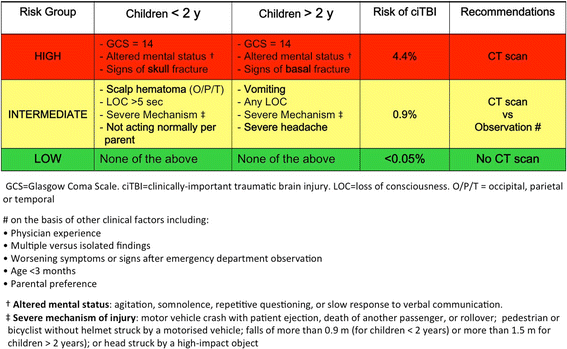Pediatric Glasgow Coma Scale Pdf In Vector
METHODS The authors conducted a retrospective review of penetrating, isolated GSWs sustained in children whose ages ranged from birth to 18 years and who were treated at 2 major metropolitan Level 1 trauma centers from 1996 through 2013. Several standard clinical, laboratory, and radiological factors were analyzed for their ability to predict death in these patients. Raghupati raghav raja ram satyagraha song free mp3 download. The authors then applied the St. Louis Scale for Pediatric Gunshot Wounds to the Head, a scoring algorithm that was designed to provide rapid prognostic information for emergency management decisions. The scale's sensitivity, specificity, and positive and negative predictability were determined, with death as the primary outcome.
Performance of the Pediatric Glasgow Coma Scale in Children with Blunt Head Trauma JamesF.Holmes,MD,MPH,MichaelJ.Palchak,MD,ThomasMacFarlane,MD, Nathan Kuppermann, MD, MPH Abstract Objectives: To compare the accuracy of a pediatric Glasgow Coma Scale (GCS) score in preverbal children with blunt head trauma with the standard GCS score in older children. Garmirian studies Pediatric Surgery, Sepsis, and Movement. Measurement of rectus femoris muscle velocities during patellar tendon jerk using vector tissue.
RESULTS Seventy-one children (57 male, 14 female) had a mean age of 14 years (range 19 months to 18 years). Overall mortality among these children was 47.9%, with 81% of survivors attaining a favorable clinical outcome (Glasgow Outcome Scale score ≥ 4).

A number of predictors of mortality were identified (all p. METHODS The authors conducted a retrospective review of penetrating, isolated GSWs sustained in children whose ages ranged from birth to 18 years and who were treated at 2 major metropolitan Level 1 trauma centers from 1996 through 2013. Several standard clinical, laboratory, and radiological factors were analyzed for their ability to predict death in these patients.
The authors then applied the St. Louis Scale for Pediatric Gunshot Wounds to the Head, a scoring algorithm that was designed to provide rapid prognostic information for emergency management decisions. The scale's sensitivity, specificity, and positive and negative predictability were determined, with death as the primary outcome. RESULTS Seventy-one children (57 male, 14 female) had a mean age of 14 years (range 19 months to 18 years).
Overall mortality among these children was 47.9%, with 81% of survivors attaining a favorable clinical outcome (Glasgow Outcome Scale score ≥ 4). A number of predictors of mortality were identified (all p. U nfortunately, intracranial ballistic injuries due to firearms, most commonly inflicted by low-velocity handguns, are not uncommon events at many major US metropolitan Level 1 trauma centers. They often lead to severe neurological injury or death. Adult mortality rates from such injuries range between 50% and 90% in most series.,,,,,,,,, Data from the Centers for Disease Control and Prevention (CDC) suggest that deaths due to intracranial gunshot wounds (GSWs) in the US may be rising. For instance, from 2004 to 2008, the mortality rate from intracranial GSWs (all ages) was 6.10 deaths per 100,000 population (). In the years 2004–2010, this rate rose to 6.34 deaths per 100,000 population.
Unfortunately, the same trend was noted for pediatric patients (1.31 deaths per 100,000 population in 2004–2008 vs 1.42 deaths per 100,000 population in 2004–2010). In fact, firearm injury was the fifth leading violent cause of hospitalization for US children in 2013 ().
In the state of Tennessee, the annual death rate from intracranial GSWs (all ages) was 9.19 deaths per 100,000 population from 2004 to 2010 (). The number of deaths over this time period was highest in Shelby County, where 561 people died from a GSW to the head. The annual death rate for intracranial GSWs in pediatric patients in the state of Tennessee was 1.60 deaths per 100,000 population, and again the rate was highest in Shelby County with 51 deaths over this 6-year period (). Pediatric GSWs present a challenge to pediatric neurosurgeons owing to their relative rarity and the consequent paucity of literature. As suggested by some, caution should be exercised when making clinical corollaries from the literature on adults to the pediatric population.,, As is the general rule for traumatic brain injury of any etiology, children typically have lower overall mortality and a greater propensity for neurological recovery than their adult counterparts, making it more difficult to prognosticate and administer appropriate intervention(s).,,,,,, In 2012, Bandt et al. Proposed the St.
